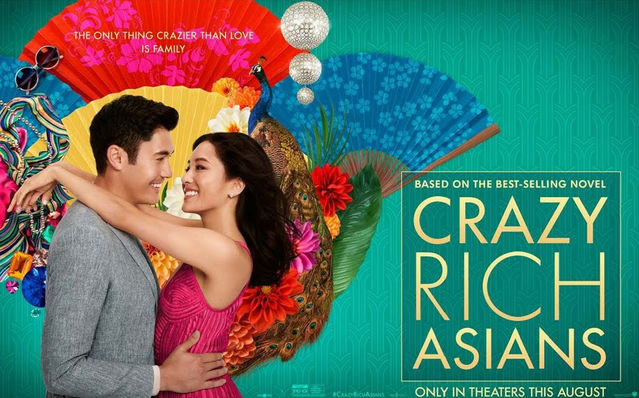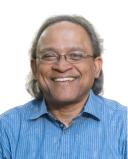Health
Crazy Rich Asians and the Asian American Psyche, Part I
A great movie and mental health booster for the Asian American psyche.
Posted August 16, 2018

Part I of a two part series. For part II, click here.
Jon Chu’s film adaptation of Kevin Kwan’s bestselling novel Crazy Rich Asians hit the big screens officially on August 15th, though I and others have seen it in sold out special screenings for weeks already. I saw it on Monday, with a nearly all Asian American crowd in Redwood City, California. The palpable emotional high was second only to our season of Linsanity back in 2012. We laughed uproariously as the movie poked good-natured fun at everything from selfie-taking to awkward family dinners, catty gossip, and over-the-top vanity and excess of youth in the affluenza class (with nods to the suffering that accompanies privilege). And we were moved by the universal family and love stories at the heart of it all, as Rachel Chu (Constance Wu) takes her child-of-immigrant-single-mom ball down the court, faces the imperial defenses of Eleanor Young (Michelle Yeoh) and her family and friends, and wins the away game by sticking to her true, good self despite all the distorting influences in the crazy rich arena of wealth, status, power, face and cultural barriers. Head and heart triumph over ego. It was as close to a perfect evening at the movies as I could have asked for, surrounded by community, who’ve all waited long for this kind of breakout, and who collectively carry deep memories and historical experiences of exclusion, discrimination and lack of acceptance. If you’re not Asian American, this is a chance to enjoy a rom com, and have a small window into the kinds of interwoven familial and relational complexity that I hear about regularly as a psychiatrist and friend in Asian America, and which are the seeds of both trauma, compassion and happiness for so many of us Asian and not Asian.
The reviews have been mostly positive, generous, and excited, considering this is the first big budget Hollywood non-period film featuring an all Asian cast since Wayne Wang’s adaptation of Amy Tan’s bestselling novel The Joy Luck Club hit the screens in 1993. (There have been other indie breakouts including Justin Lin’s Better Luck Tomorrow and Alice Wu’s Saving Face.) But the Internets are not all happy! There’s been a chorus of complaints that the movie doesn’t do ethnic diversity in Singapore justice (while ethnic Chinese make up 76 percent of Singapore’s population, 15 percent are Malays and 7.4 percent are Indian/South Asian). Others question whether the movie glorifies wealth. (It’s more of a sendup and cautionary tale of wealth and excess, I think, and a reminder of hope and the value of hard-won love, relationships and depth in a world where they are too often devalued. Also, it reminds us that money doesn’t solve all problems, or buy you love. In fact, “mo’ money, mo’ problems,” as the saying goes.)
We’re at a strange cultural moment when a fairy tale rom-com romp with a heartwarming message is asked to bear the burden of all our social justice issues. Perhaps it’s partly because “Asians” are in the title, and the film is thus seen as a frame of reference for all Asian and Asian American identity. The Joy Luck Club also got quite a lot of criticism back in the day for negative portrayals of Asian males. We had these things called “conversations” back then, though, not Twitter. I do know that arguments over Asian American gender dynamics have been quite volatile, and understandably so, for many decades, dating back in my lifetime at least to controversies between authors Maxine Hong Kingston and Frank Chin.
Kudos to Constance Wu, though, for asking for a dialogue change from the original script when her character originally turns her nose up at dating Asian men—that alone makes me want to see this movie a dozen times! And here’s to Asian love stories in general! More please!
On a meta-level, the criticism of Crazy Rich Asians can be seen as a manifestation of collectivistic identity in conflict with itself. The film, like a family member, is being asked to perform in a family-pleasing way. The film, as an individual, like Rachel Chu, is just asking to be loved for who she is, on her terms. I think the community is largely siding with Rachel-as-movie, with some concerns about where she’s taking her individuality. I’m trusting that Rachel-as-movie cares about all of us after all, and not just about herself. But we’ll see.
My main critique of the cultural moment (not the film) is really a wish. I wish Asian Americans would do more to support Asian American arts, and not simply go big for watershed events like Crazy Rich Asians. I think this would not only be good for our artists, but also good for our cultural identity and mental health. I’ve been exposed to so many fantastic Asian and Asian American movies at Asian American film festivals, so I know there’s no dearth of talent or stories in front of or behind the camera, including the soon-to-be-released Sundance Festival hits White Rabbit by Vivian Bang (released in Los Angeles and streaming on September 21st), Searching starring John Cho (opening in select and then nationwide theaters August 24th) and the documentary Minding the Gap by Bing Liu (now on Hulu and in theaters soon). As a 13-year blogger for CAAMFest, the Asian American film festival in San Francisco, I’ve seen variable attendance at too many great films to count over the last decade. If we want more of our stories, we need to show up for film festivals and support our writers and other artists in greater numbers. There are 18 million+ of us—we will be the largest non-White ethnic group in the country by 2055, surpassing Hispanics, according to the Pew Research Center—that’s enough to make many more of our artists viable professionally and to help create hopefully a new level of acceptance, instead of conflict, through diversity. We shouldn’t just depend on mainstream acclaim to get the medicine of our artists to our communities and the broader culture, and really work on furthering our communal identity and consciousness. OK, that’s enough of my soapbox.
I plan to see this film again soon. I was hooked right from the opening sequence, hearing a woman singing beautifully in Mandarin, in a theater filled with Asian Americans. That feeling of being romantically carried to a world that implicitly embodied and validated Asianness and people with faces similar to my friends and so unlike the worlds typically portrayed by Hollywood, was more than worth the admission price. I didn’t need the movie to “solve” issues of diversity with more Brown faces, because I don’t consider my identity separate from those of other Asians and Asian Americans. Or really separate from White Americans, for that matter. (Or microbial life, for that matter, but you’re talking to a biology major.) The fact that Rachel Chu and Nick Young (Henry Golding) were onscreen, embracing love over family disapproval and career was enough for me. I’m a sucker that way, folks. Rachel is a smart woman, and Cinderella to her Prince Nick. But she ends up not only holding her ground, but transforming the game by holding true to her sense of self and even selflessness. And there are subtle calls to Asian relatedness. There are a dizzying number of people onscreen throughout the film, highlighting the collectivist/relational identity experience of Asians in particular. “Face” is gained, lost and pressured more frequently than in all the spas in Asia combined. And there is pleeennnty of personality diversity. Cue Awkwafina, Nico Santos and Ken Jeong, for starters!
The naysayers have largely been sidelined by an avalanche of support and sold out screenings. These critics are important voices in the discussion, but they also reflect our mental health and subjective well-being challenges as we continue to form community. What are these challenges? What must we surface in order to work at communal health?
Social media is a very mixed blessing, perhaps especially so for Asian Americans.
Social media is our ‘auxiliary amygdala,’ our survival-brain threat sensor, where anger is usually the most viral emotion. I’ve written about this extensively in my book Facebuddha: Transcendence in the Age of Social Networks. We often get attached—narcissistically attached—to our opinions online, and then it becomes hard to have conversations. We feel we'd rather be right than related. We become focused on convincing others of our opinions, rather than listening to each other. We can walk away from our 14 hours a week on social media dissatisfied, instead of having conversations that connect. (See my articles Social Media and IRL: Narcissistic Attachment to Opinion, Is Facebook Making Us Narcissistic? and Is Facebook Destroying Society and Your Mental Health?
But many younger people, including Asian Americans, supposedly feel comfortable on social media, where it’s possible to type out and express thoughts and emotions in a more planned way. Real life, though, is awkward but rewarding. My bias is that we have to work with what I call ‘the magic of awkward’ to get to our true relational selves. We can’t rely on asynchronous communication where we can be ‘perfect.’ We also have to be wary of social media priming us to have knee jerk reflexes to situations, rather than engaged responses.
Asian Americans do want diversity – and are frustrated
The vast majority of us do want diversity and inclusion — for example, two-thirds of Asian Americans supported affirmative action in 2016. Many of us also feel we don’t have acceptance and a sense of belonging in the culture-at-large, despite some successes. There is also vast diversity in the Asian American experience—we are creating something new out of ethnically and economically diverse components here in America, what I call a bricolage individual and communal identity. When the big screen vision seems to fall short, some of us feel particularly slighted. This is an era where our “identities are burning” as I wrote recently (On Han, Soul, the Collective Psyche and Micro-aggressions), and so we feel particularly on edge and on the hook for getting diversity right.
Part I of a two part series. For part II, click here. (covering the research on Asian American's and collective vs individual identity, pessimism and optimism, and needs for belonging).
You might also like these articles:
8 Asians review of Crazy Rich Asians
Jeff Yang in Angry Asian Man: WHAT WAS REALLY HAPPENING IN CRAZY RICH ASIANS’ PIVOTAL MAHJONG SCENE
Jiayang Fan in The New Yorker: How to watch Crazy Rich Asians like an Asian American
The Pacific Heart: Susan Cain’s Quiet: Is Asian American Silence “Golden”?
(c) 2018 Ravi Chandra, M.D., D.F.A.P.A.
References
Galinha IC, Garcia-Martin MA, Oishi S, Wirtz D, Esteves F. (2016) Cross-cultural comparison of personality traits, attachment security, and satisfaction with relationships as predictors of subjective well-being in India, Sweden, and the United States. Journal of Cross-Cultural Psychology 47(8) 1033-1052
Thao NTP. (2016) Different effects of acculturative stress and family life stress on depressive symptoms among married Vietnamese immigrant women in South Korea. Asian Social Work and Policy Review 10:225-236
Benet-Martínez V, Karakitapoglu-Aygün Z. (2003) The interplay of cultural syndromes and personality in predicting life satisfaction: comparing Asian Americans and European Americans. J Cross-Cultural Psychology 34(1):38-60
Suh EM. (2007) Downsides of an overlycontext-sensitive self: implications from the culture and subjective well-being research. J Personality 75:6, 1321-1343
Uhm, SU (2014) Mental illness from an Asian American perspective. In Neuropsychology of Asians and Asian Americans, eds. Davis JM D’Amato RC. Springer, 2014.
Chang EC. (1996) Evidence for the cultural specificity of pessimism in Asians vs Caucasians: a test of a general negativity hypothesis. Person. Individ. Diff 21(5):819-822




